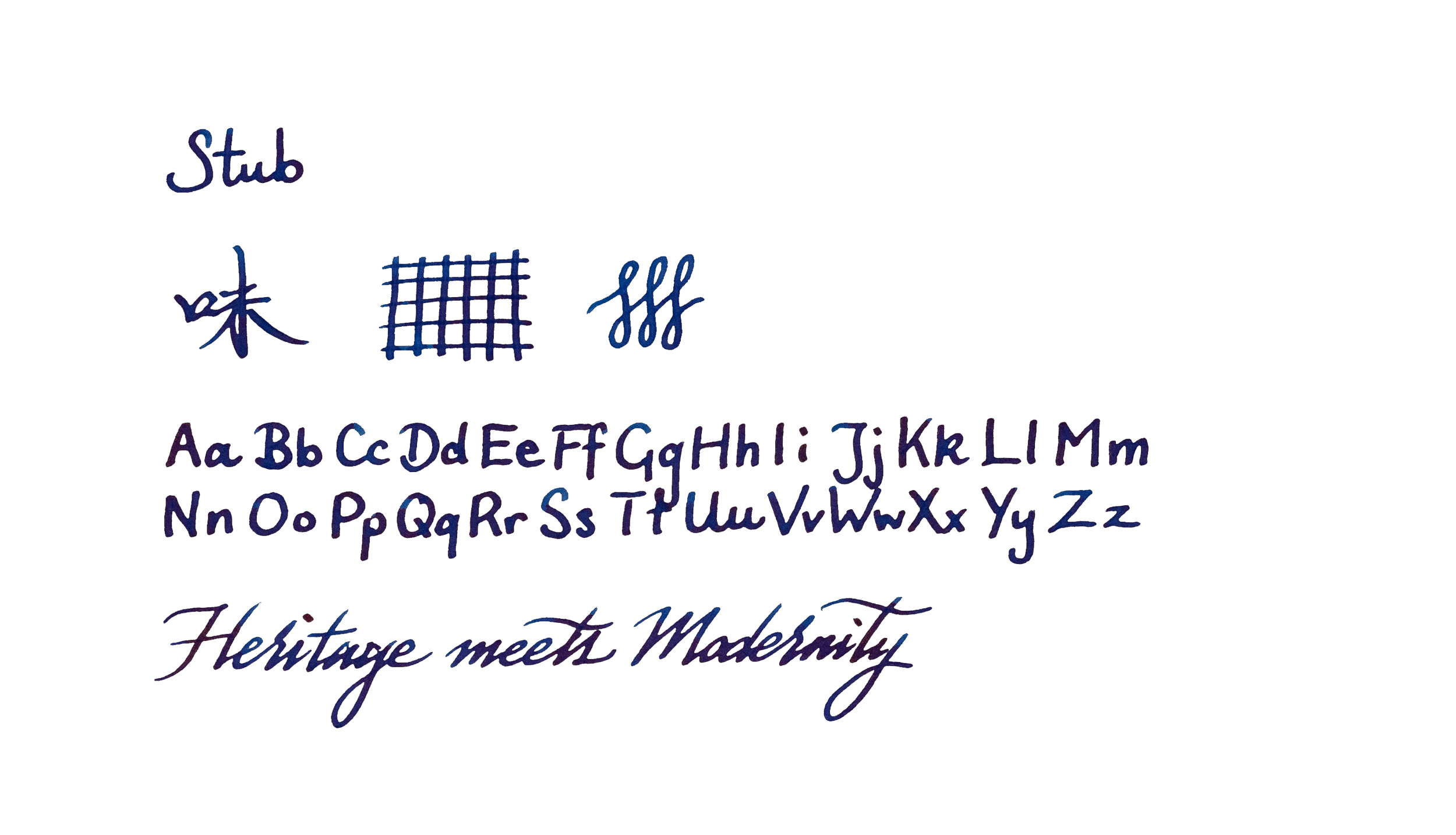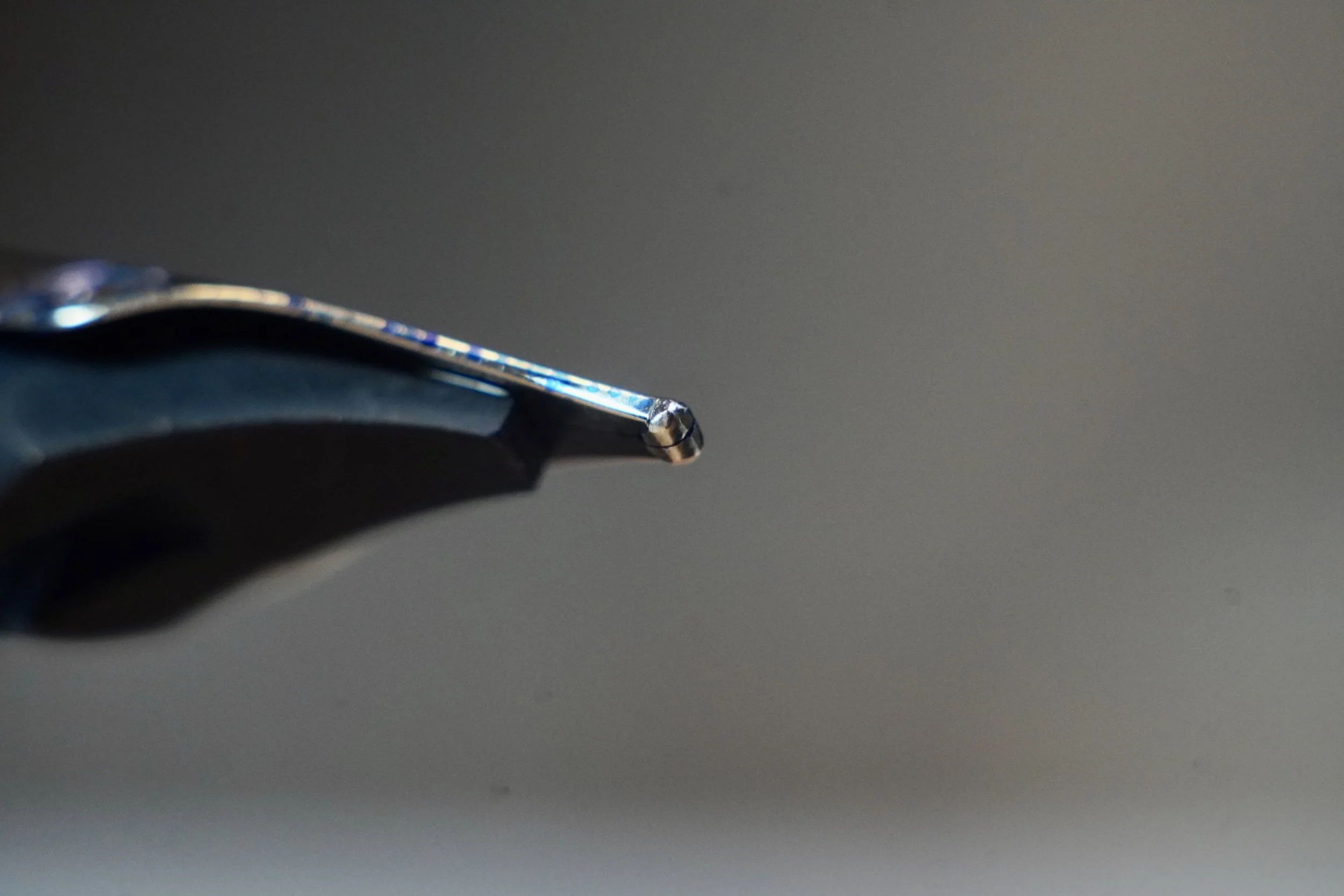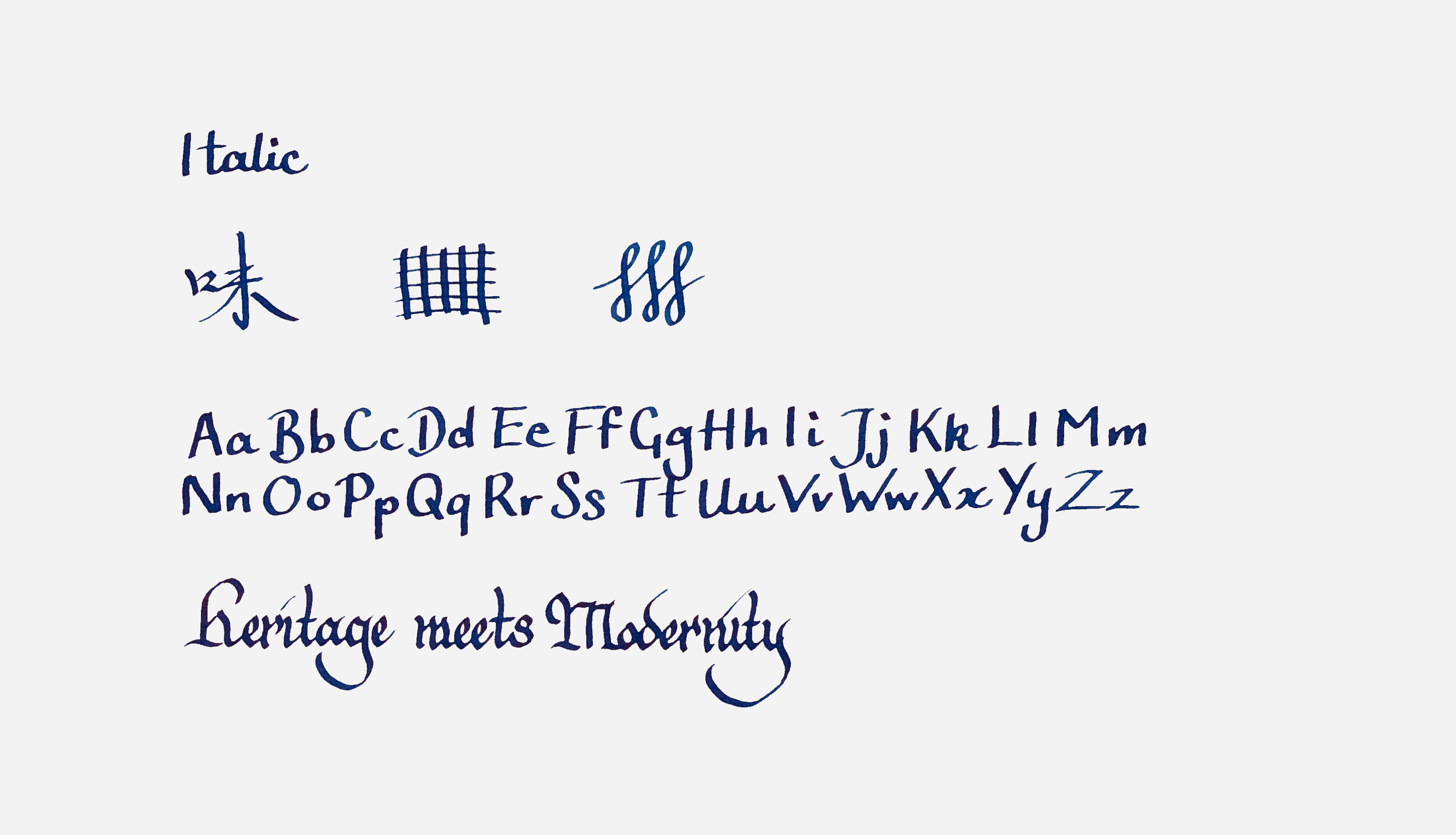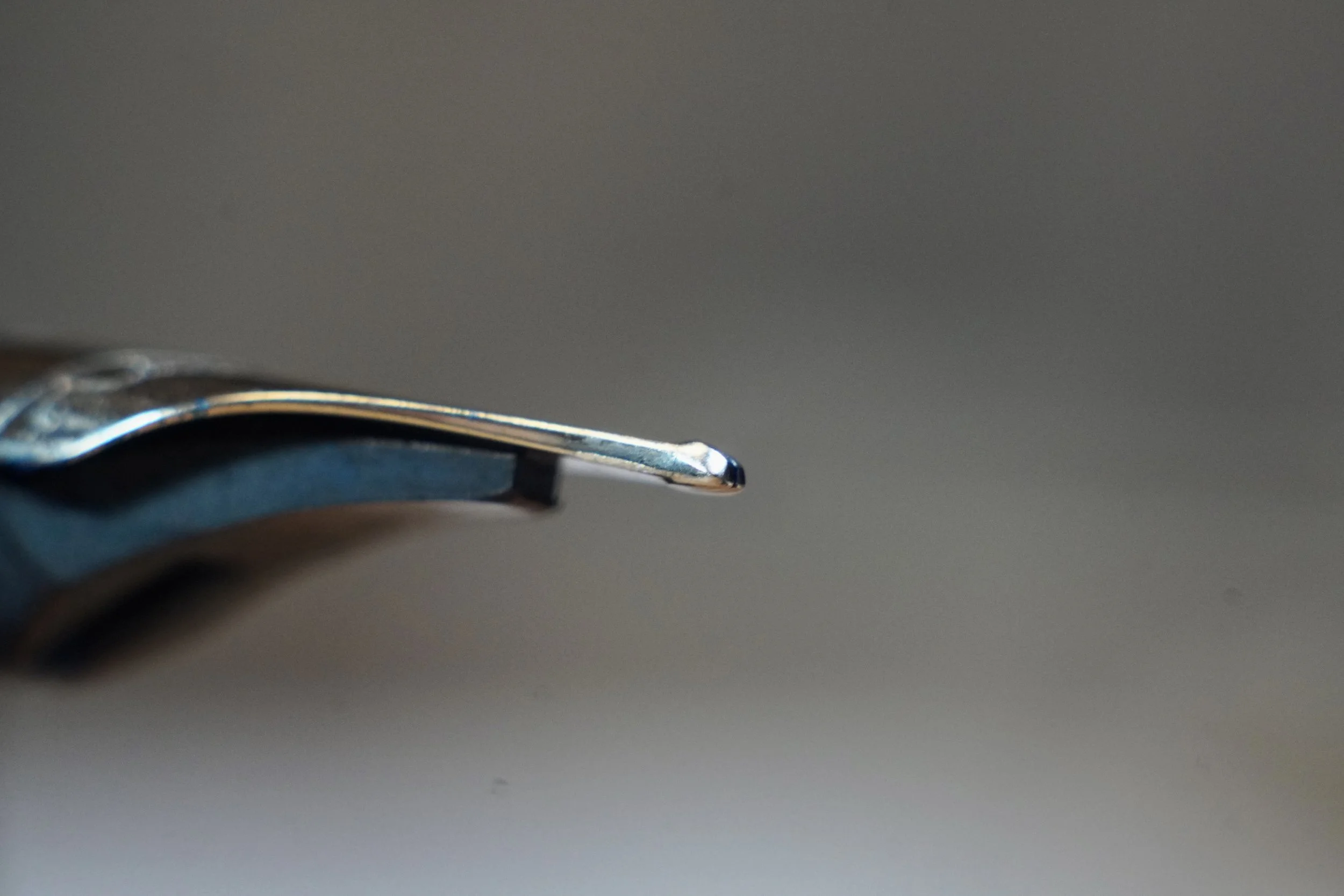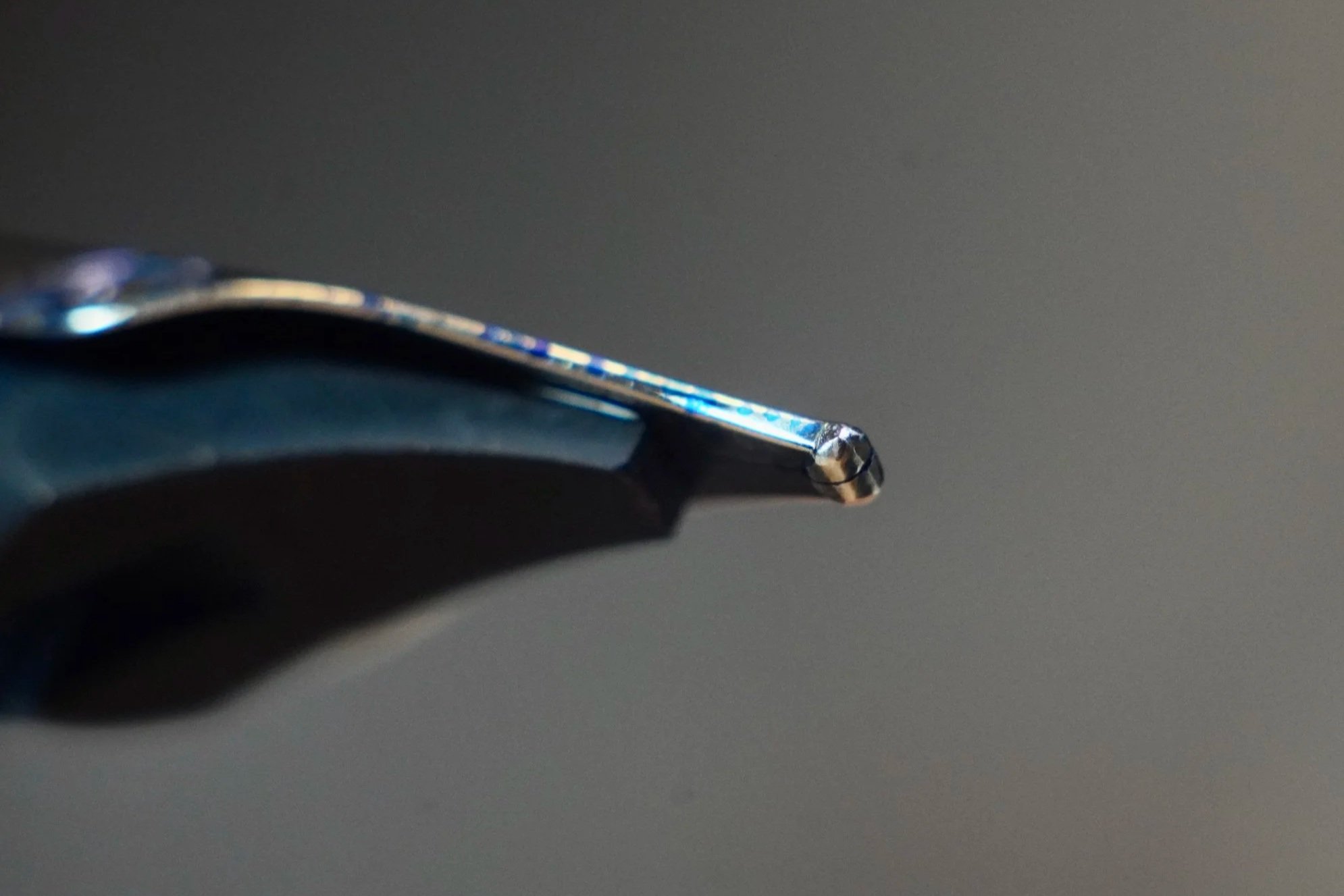
STUBS, ITALICs, & OBLIQUES


Stubs, Italics, & Obliques
Stubs are known to be the gateway into custom nibs and for very good reason. For many people, using a stub can give the writer a unique flair without much effort. The reason for this is because a stub is not round and therefore the contact surface area creates a shape that has edges. These edges give writing a character much like serifs do to letters and is most suited for cursive handwriting.
In essence, a stub nib has the tipping shaped in a rectangular block. The tipping should be wider horizontally, and thinner vertically, with all sides of the tipping ground at around 90° to each other creating a perfect box. Furthermore, a stub nib will generally have the corners of the tipping rounded to prevent the nib from catching the paper. What this results in is a broad edge nib that gives a gentle variation that can sometimes be subtle, but feels generally smooth to write with. Due to the rounding of the corners, stub nibs can feel very similar to rounded nibs with an edge.
A stub nib would be recommended for anybody who is new to fountain pens and new to custom nibs, as it can be very forgiving. Some manufacturers also offer stub nibs as a default option now, such as Pilot, Visconti, and companies using Jowo nibs. Stub nibs can also be found on vintage pens occasionally and have been very popular for many years.
Italic nibs, on the other hand, tend to be a more specialised tool. Similar to stubs, italics have a flat bottom. The most traditional italics will have a cut 90 degrees to the nib, with another cut 90° perpendicular to the cut on the bottom in order to make a sharp edge. A cut is then made flat on the top of the nib, which is the basic shape of a stub.
From here, the top two corners are cut diagonally at 45° in order to create sharp corners on the bottom flat edge. On the top edge, a diagonal cut is made slanting towards the bottom flat edge and creating Isoceles Trapezoid shape. The edges are smoothed but not rounded on a traditional formal italic nib. This means that a traditional formal italic nib is sharp to write with and may sometimes feel like cutting paper (though a well ground one should not catch paper). Due to the sharpness of this nib, many people seek a smoother version of this nib. This is where cursive italics and cursive smooth italics come in. Both of these italic variations maintain the same basic shape but are rounded differently from traditional italic nibs. A cursive italic is generally rounded on the bottom edge while maintaining the same shape. This will make the nib write wider horizontally because the contact surface of the tipping is increased from a sharp edge to a rounded edge, which increases the amount of contact that the nib makes with the paper. At Kyuseido, we grind a cursive smooth italic with a slant upwards from the bottom edge. This upwards slant gives the nib a much smoother writing experience, but will make the horizontal strong a bit wider than even the cursive italic, but still much thinner and sharper than a stub.


